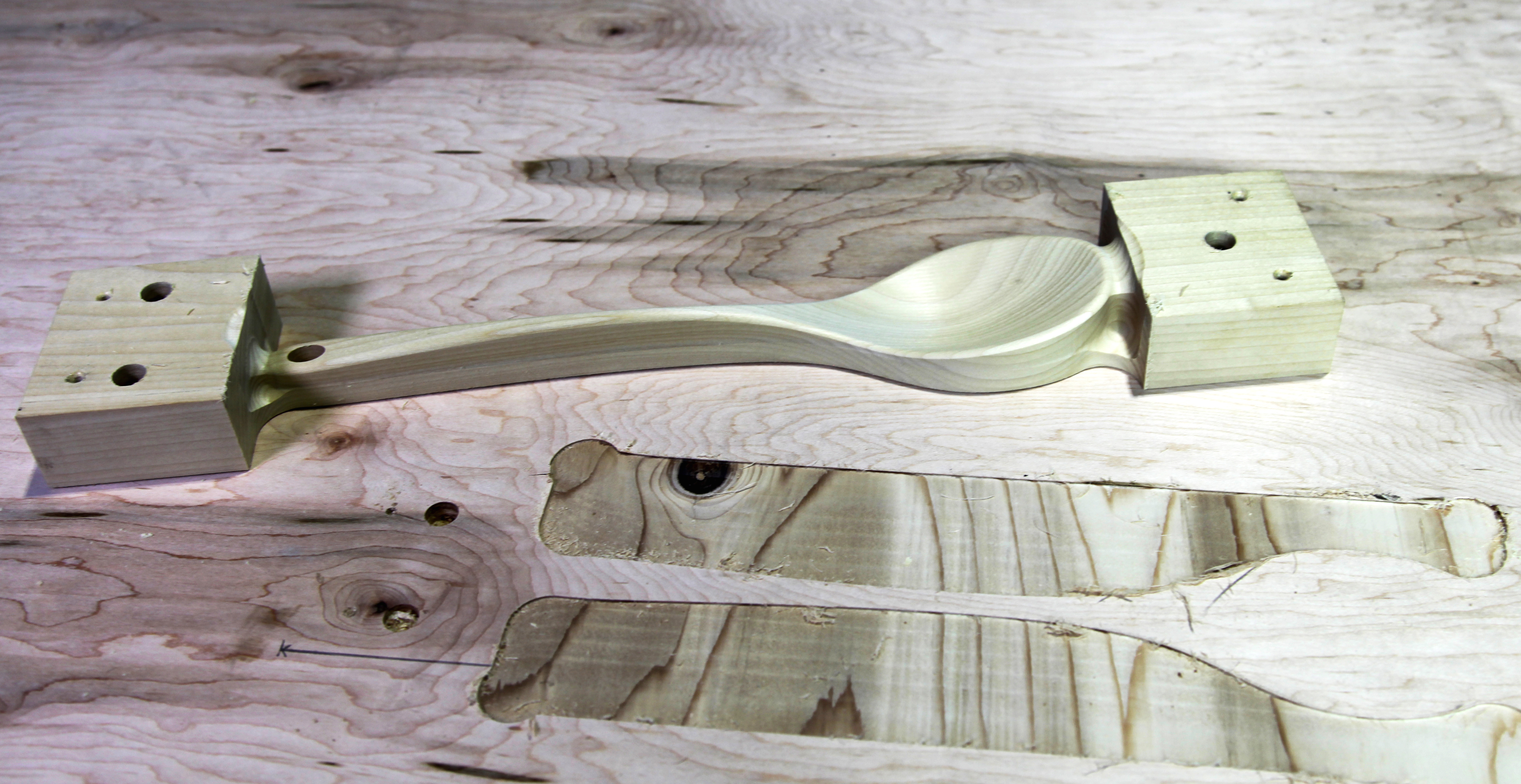CNC Machining: Run Setup 2

Now that you have finished Setup 1 toolpaths, it's time to flip the stock and proceed to Setup 2.
Flip the Stock
1) Turn the key to Setup Mode, open the doors, and pull the E-stop.
2) Use the impact driver to remove the part from the spoiler board, and sweep the chips away.

3) Use the air hose behind the back of the DMS to clear the chips out of the holes in the spoiler board.

4) Choose three 1/2" compressed dowels from the wood shop (in one of the drawers under the Compound Miter saw).

5) Slide the dowels into the holes--there should be some resistance--and knock them with a rubber mallet until they protrude from the holes.


6) Flip the part away from you, like you did in the CAM software, and align the dowels with the holes. Knock the dowels with a mallet into the spoiler board. Then knock the part down flush against the spoiler board.
7) Use the same four drywall screws to screw the part back down.
Setup 2: Two Adaptive Operations and Parallel Finishing
Remember that your dowels have ensured that your part is in the correct orientation in the X-Y positions. You also have not machined any of the material on the two rectangular prisms on either side of your stock, meaning that the height of your part has not changed. This means that you do not need to set a new WCS for Setup 2!
In other instances, you might face your part or do something else to change its height. In those cases, it is important that you reset the Z-coordinate of your WCS for Setup 2. This is assuming that your X and Y locations are correctly registered and do not need to be reset. If you don't have a registration system, any time you move the part you need to reset the X, Y, and Z coordinates of the WCS.
1) Load and Execute Program 100002.PIM.
Again, look at the CAM Simulation to verify where the tool will enter the material. In this case, it will helix ramp into the handle of the spoon. If the tool doesn't descend in this location, stop the the program and check your WCS and CAM simulation.

2) Run the two roughing operations.
This will take about thirty minutes to complete.
Though you don't have as much material to remove, you decreased your optimal load to account for the fact that the part is only being held in position with two small tabs. It is therefore prone to chatter, or excess vibration, which you will hear. You'll also see that the second roughing operation is a bit inefficient, but it's important to remove that excess material around the backside of the spoon scoop to prepare the part for the finishing operation.

3) Run the Parallel finishing operation.
This will take about ten minutes to complete.
4) When Setup 2 is done, turn the key to Setup Mode, open the doors, pull the E-stop, and remove your part.
You're now done with machining!